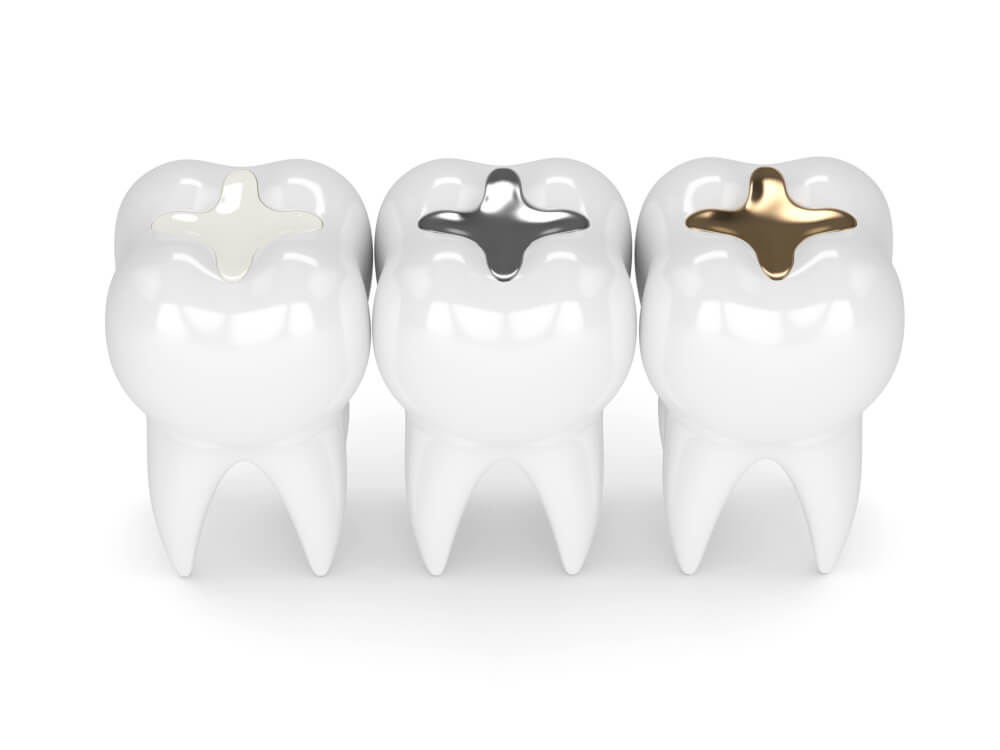
A tooth filling is used to repair a tooth that has been affected by decay, cracks, fractures, and other minor damage. The dental filling is usually performed during a single appointment by removing the decayed or affected portion of the tooth, cleaning it, then filling it to prevent further progression of disease of damage.
At Orchid Dental, we offer tooth-colored composite fillings that can be closely matched to the color of your existing teeth so that they are unnoticeable. For patients with varying needs, we also have a range of common tooth filling materials to choose from.
What to Expect When You Get Your Tooth Filling
When you come to see us at the Orchid Dental clinic, you can expect a calming atmosphere with friendly staff and state-of-the-art equipment with our skilled dentist, Dr. Nelson Joo, utilizing the latest technologies for the highest quality results!
Your appointment will start with a thorough exam that may include a dental probe, the use of detector dyes, and X-rays to evaluate the condition of your teeth. Your dentist will then consult with you to advise on the recommended procedure to best treat your condition.
If it is determined that a dental filling is required, your dentist will administer a local anesthetic to numb the area being treated, then drill out any decay that may be present. Once the affected tooth is thoroughly cleaned, the hole will be filled with a filling material as agreed with your dentist during your consultation.
The entire process from exam and consultation through completion of the tooth filling can be expected to take approximately an hour, with the actual treatment only lasting a few minutes. At Orchid Dental, we practice gentle dentistry to ensure our patients experience minimal pain or discomfort, and most of our tooth filling patients report feeling no pain at all!
Once your appointment is over, your mouth may remain numb for a few more hours following the procedure. Complications with tooth fillings are not likely, though increased sensitivity is common in the first few weeks following. If you do experience pain or persistent sensitivity, discuss with your dental clinic for a follow up appointment.

Types of Material for Your Dental Filling
The most common materials used for tooth fillings today are cast gold fillings, amalgam fillings, and tooth-colored composite fillings. Porcelain fillings and glass ionomer fillings are also used, though less frequently. The characteristics, pros and cons of each type are outlined in the section below.
Cast Gold Fillings
The key advantage to cast gold fillings is their strength and durability. They are non-corrosive, lasting upwards of 10-15 years, and have been shown to hold up through many years of serious chewing. They aren’t exactly inconspicuous, though some people prefer them to the silver coloring of the amalgam fillings.
Due to their strength and durability, and because they are quite noticeable, they are best for use in the back molars where most of the chewing takes place. Cast gold fillings are the priciest of all tooth filling material choices and can cost up to 10 times that of amalgam fillings.
Amalgam Fillings (AKA. Silver Fillings)
Amalgam fillings, also known as silver fillings, are comprised of several metallic elements and have been used in dentistry for over a century. Though not quite as strong as gold, these tooth fillings are also highly durable, lasting around 10-15 years. They are also the most affordable option, usually costing less than the composite fillings.
Some of the downsides are that they are very noticeable and may even leave a greyish hue to the surrounding natural tooth. For smaller cavities, some of the healthy parts of the tooth may need to be removed to make room for an amalgam filling, and the material may experience wider ranges of expansion and contraction with heat and cold, increasing risk of cracks and fractures. There is also a small (1%) risk of allergic reaction to the mercury that is present in amalgam fillings.
Tooth Colored Composite Fillings
Being tooth colored (with color-matching to get it as close as possible to your natural teeth), one of the composite filling’s primary advantages is the aesthetics. These tooth colored fillings are likely to blend in completely with your natural teeth. Furthermore, they chemically bond to the natural tooth structure for further support and can also be used to repair a worn, broken, or chipped tooth.
Composite fillings don’t last as long as their metal counterparts, with an expected lifespan upwards of around 5 years, and may not withstand the heavy chewing that back molars often need to perform. They also take longer than amalgam fillings to place in your mouth and are usually around twice the cost. These tooth colored fillings are most often recommended for the more visible teeth toward the front that perform only low to moderate amounts of chewing.
Porcelain Fillings
Ceramic fillings are usually made from porcelain and are the other option of tooth colored fillings. Porcelain fillings are less likely to stain over time than the composite version and are more durable, lasting up to 15 years. However, they are priced much higher, costing as much as gold fillings.
Glass Ionomer Fillings
Made from acrylic and a type of glass, glass ionomer fillings release fluoride to help protect teeth from further decay. They are not as durable as other tooth filling materials, usually lasting 5 years or less while the price point is similar to the composite fillings. Glass ionomer fillings are most often used for treating cavities and damage below the gum line or for treatment in young children.
How to Care for Your Cavity Filling
Regular practice of good oral hygiene is key to not only caring for your cavity filling but also to minimizing your risk of requiring future tooth fillings. Brushing twice daily, flossing, rinsing with an antibacterial mouthwash, and regular visits to your dental clinic for check-ups and teeth cleaning are highly important. Regular dental visits will also allow your dentist to be alerted to any issues that arise with your dental filling at the earlier stages for more effective intervention.
If you start to experience new sensitivity or pain in the area of your tooth filling, contact your dentist for a check-up. You may require a follow-up appointment, and if you have had your cavity filling for several years, it may be time for a replacement.
FAQs About Dental Fillings
How do I know if I need a tooth filling?
Only your dentist can determine for certain whether you need a dental filling. However, you can look out for some tell-tale signs that will help you get to a dentist sooner for the best results.
The most common condition that requires a tooth filling is tooth decay. Visual signs of decay may include dark spots or greyish blue hues on your teeth. You may also be able to feel a chipped area or even a hole where the decay has caused a cavity. In the earlier stages, you may experience mild sensitivity to heat and cold that may progress to pain when biting or chewing. These symptoms are likely to progress if left untreated, so make an appointment as soon as possible!
If you have a fractured or chipped tooth, you may also require a dental filling. This may be the result of persistent grinding of the teeth or other pressure such as biting into something hard. As with for tooth decay, it is important to get treatment as soon as possible.
When do you need a root canal vs. a dental filling?
If tooth decay affects the pulp inside the tooth, root canal procedure may be necessary. Usually, at this stage, a tooth filling is no longer a viable option as the decay reaches to the pulp to cause infection. Left untreated, this infection can not only spread to surrounding teeth, but also affect the patient’s overall health through the bloodstream. If you suspect you require a tooth filling or root canal procedure, contact your dental clinic right away!
Will insurance cover my cavity filling procedure?
Most dental insurance plans will at least partially cover tooth fillings. In many cases, they may cover the full cost of an amalgam filling, which is usually the cheapest option. Some plans may cover up to the cost of a composite filling, especially if it’s for your front teeth. If you choose a more expensive type of filling, you may need to cover the difference, depending on your plan.
contact us now!
Do you need a tooth filling in Aurora CO? Contact us at Orchid Dental to make an appointment today!


